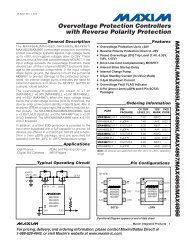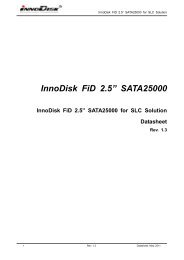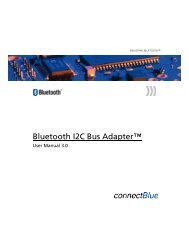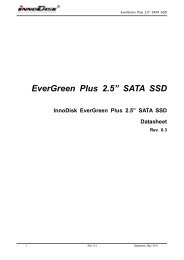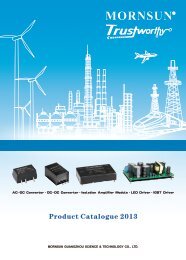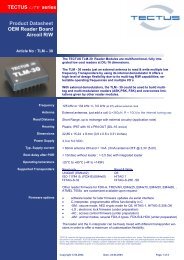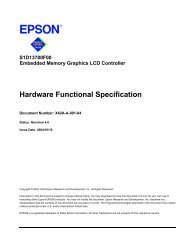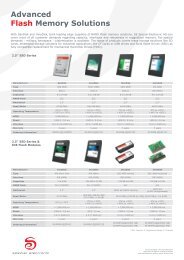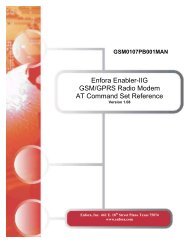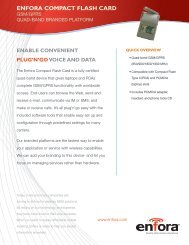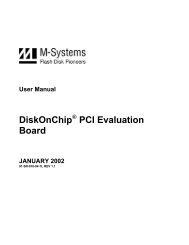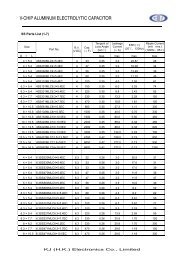Enabler II-G Assiste GPS Integration Guide - Farnell
Enabler II-G Assiste GPS Integration Guide - Farnell
Enabler II-G Assiste GPS Integration Guide - Farnell
You also want an ePaper? Increase the reach of your titles
YUMPU automatically turns print PDFs into web optimized ePapers that Google loves.
Enfora <strong>Enabler</strong> <strong>II</strong>I-G<br />
Modem <strong>Integration</strong> <strong>Guide</strong><br />
4.6.1. Advanced tips for an RF friendly layout<br />
4.6.1.1. Ground Plane<br />
To ensure the lowest possible EMI emissions and maximum thermal conductivity, it is<br />
recommended that all metal tabs on the GSM module shield must be soldered down onto a<br />
continuous ground plane that runs under the entire module. Ample ground vias should be<br />
provided around the metal tabs to create a low impedance ground. It is recommended to<br />
minimize the number of I/O and power traces and vias under the GSM module to allow for as<br />
much ground plane as possible. An example of a good ground structure and pad layout is<br />
shown below in Figure 1.<br />
4.6.1.2. Thermal Relief<br />
Figure 1 - Example of good ground plane for GSM modules<br />
Because the ground plane acts as a large heat sink, it can affect the solderability of<br />
components. A common method to reduce this effect is to use thermal relief around the pad<br />
in question. However, great care must be taken when using thermal relief for high current or<br />
high frequency applications<br />
For example, a large thermal relief like the one shown in Figure 2 can serve the purpose for<br />
general applications such as low current, low speed data lines, DC connections and audio<br />
GSM0308PB001 14 Version 1.03– 7/17/2007



